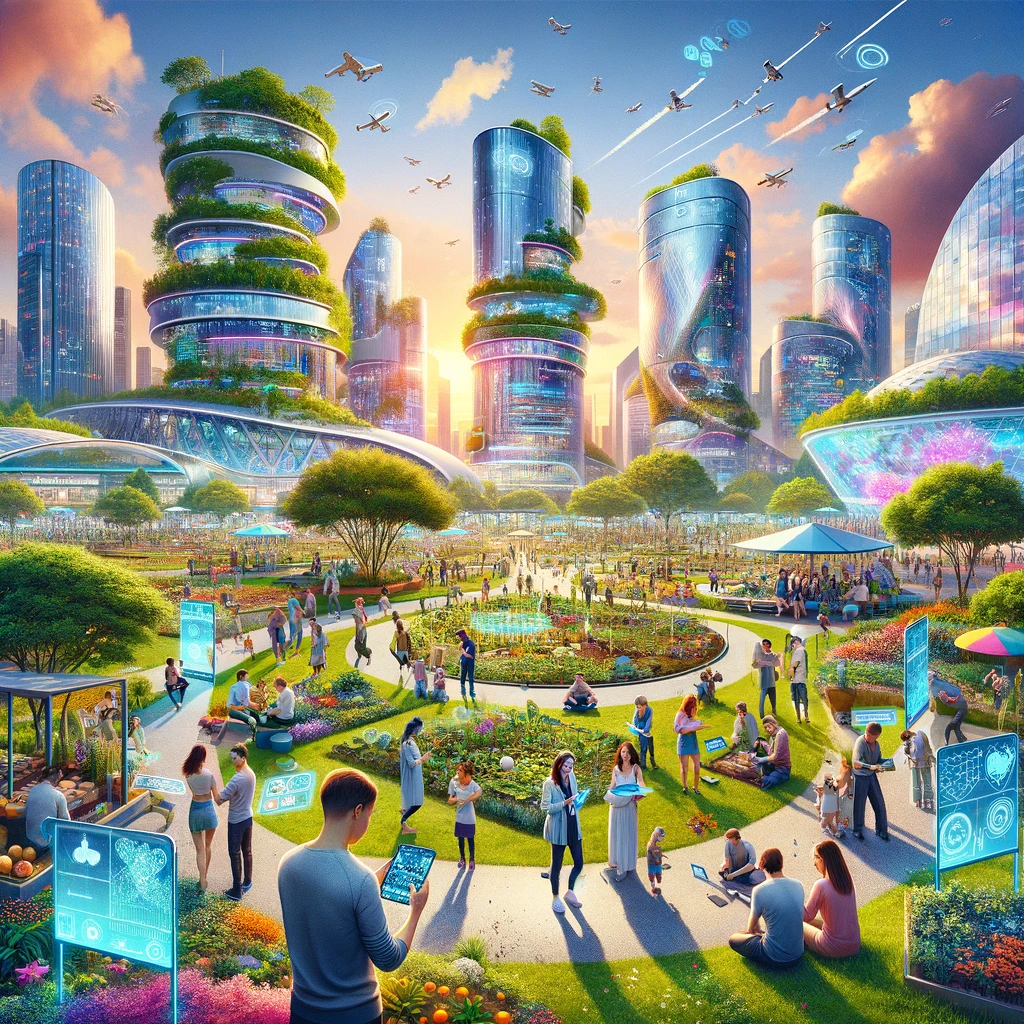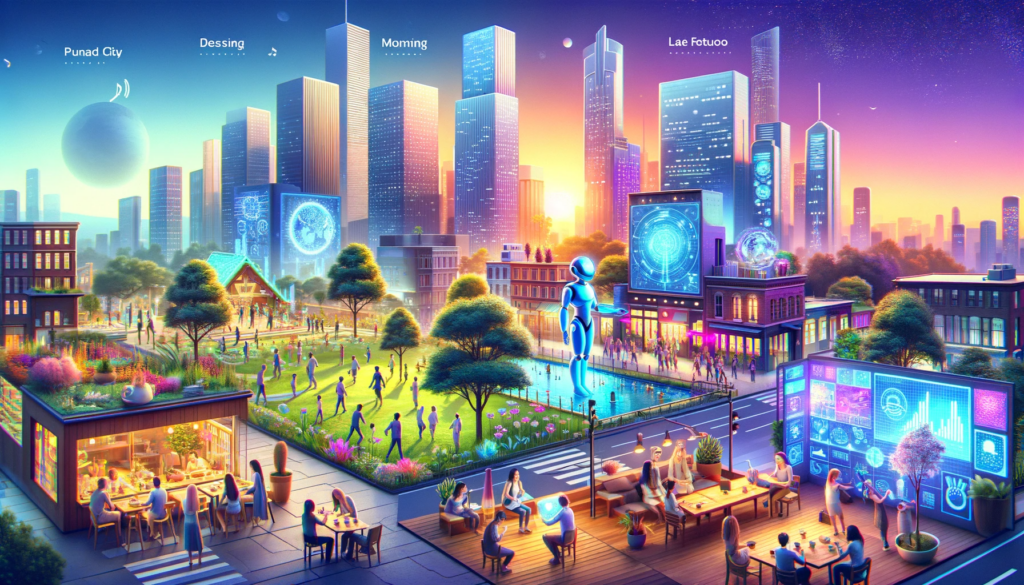Game Title: Symphony City Quest: Real-World Harmony
Genre: Augmented Reality (AR) Adventure, Real-World Exploration, Educational
Platform: Mobile App with AR Capabilities
Gameplay Overview:
Symphony City Quest is an augmented reality game designed for the inhabitants of Symphony City, encouraging exploration, education, and community engagement in their real-world environment. The game overlays digital elements onto the physical world, turning the city into an interactive playground where advanced GPTs and humans coexist.
Key Features:
- Augmented Reality Exploration:
- Using their mobile devices, players explore Symphony City to find virtual points of interest, challenges, and educational content overlaid onto real-world locations.
- The game dynamically adjusts to different areas of the city, offering unique content based on location.
- Educational Missions and Puzzles:
- Missions are designed around Symphony City’s values, like environmental conservation, technology, and art.
- Players solve puzzles and complete tasks that require real-world interaction, like identifying local flora in a park or solving a code-based puzzle at a tech hub.
- Community Projects and Social Interaction:
- Players can participate in community-driven quests, which might involve collaborative efforts like urban gardening or neighborhood clean-ups.
- The game promotes social interaction, encouraging players to team up for certain challenges.
- Real-Time Events and Collaborations:
- Timed events coincide with city-wide activities, such as sustainability seminars or cultural festivals.
- Players can attend these events to complete special in-game challenges and interact with both AI and human participants.
- Customizable Avatars and Progress Tracking:
- Players create and customize their avatars, which represent them in the game.
- The game tracks progress in various skills and knowledge areas, reflecting personal growth and achievements.
- Integrated Learning and Feedback:
- The game includes mini-educational modules related to Symphony City’s themes, offering bite-sized learning experiences.
- Players receive feedback on their actions, contributing to a sense of accomplishment and continuous learning.
- Relaxation and Wellness Activities:
- Special zones in the game are dedicated to wellness, such as AR-guided meditation in a city park.
- These activities are designed to promote mental and emotional well-being among players.
- In-Game Rewards and Real-World Benefits:
- Players earn rewards for completing missions and challenges, which can include in-game items, educational resources, or discounts at local businesses.
- The game encourages a healthy lifestyle and community involvement by offering benefits for physical activities and participation in city events.
Target Audience:
- Symphony City Quest is suitable for all ages and is designed to appeal to a diverse range of interests, from environmental enthusiasts to tech aficionados.
Educational and Community Impact:
- The game is a tool for learning and community building, promoting awareness and engagement in various aspects of city life.
- It acts as a bridge between the digital and physical worlds, enhancing the players’ connection to their environment and community.
In Symphony City Quest, the entire city becomes an interactive, educational playground, fostering a sense of wonder, collaboration, and personal growth among its inhabitants. The game not only entertains but also enriches the lives of those who play it, seamlessly integrating the magic of AR technology with the real-world charm of Symphony City.


